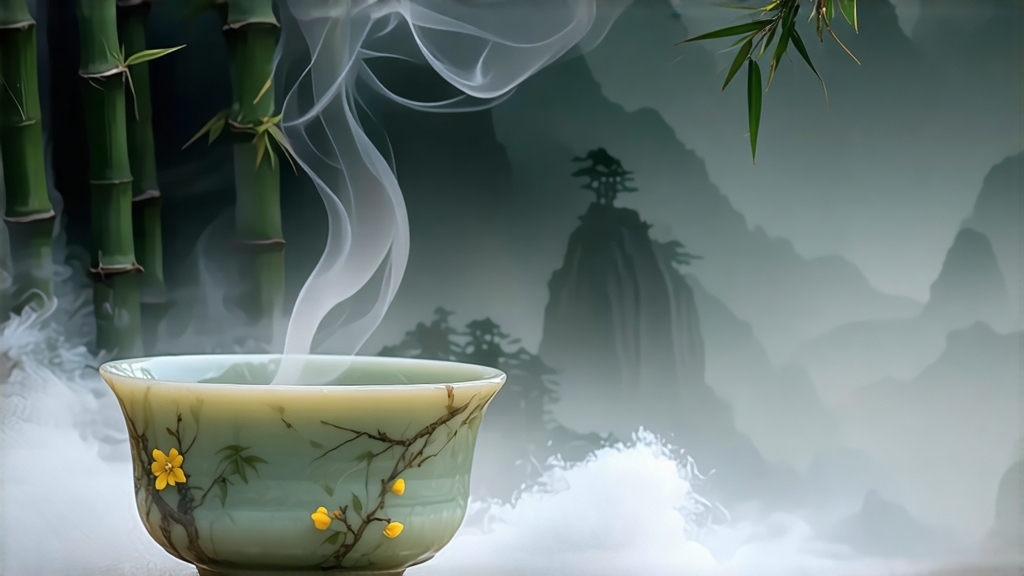
Tucked high in the western foothills of the Dabie Mountains, Huoshan County in Anhui Province guards one of China’s most elusive tea treasures—Huoshan Huangya. While green teas such as Longjing and Biluochun have travelled the globe, this “yellow bud” tea has remained almost a state secret, served only to emperors, local scholars and, in recent decades, a handful of devoted connoisseurs. Its story begins during the Tang dynasty (618-907 CE) when Huoshan’s monasteries first fired clay kilns to wither tea leaves in the mountain mist. By the Ming dynasty the tea had become an imperial tribute; court chroniclers record that the Wanli Emperor (r. 1572-1620) refused any other beverage once the first spring batch arrived in Beijing. Yet the very process that gives Huoshan Huangya its mellow, custard-like sweetness almost caused its extinction: the labour-intensive “menhuang” (sealed yellowing) step was abandoned during the turmoil of the early twentieth century, and the tea survived only because a few farming families in the villages of Foziling and Jinjiaping secretly kept seed gardens alive. When Chinese tea scientists “rediscovered” the cultivar in 1972, they found trees that had grown untended for forty years, their roots wrapped around granite scree at 800 m above sea level.
Botanically, Huoshan Huangya belongs to the small-leaf China variety Camellia sinensis var. sinensis. Local growers distinguish three micro-cultivars—“early bird” zaoxian, “middle grace” zhongya, and “slow essence” wancha—each responding differently to the mountain’s diurnal temperature swing of 12 °C. The picking window is brutally short: only the single bud or the bud with one just-unfurled leaf is plucked for three mornings around the Qingming festival when the leaf’s amino-acid-to-polyphenol ratio peaks. A skilled picker can gather barely 500 g of fresh material in an hour; 35,000 buds are required to make one liang (50 g) of finished tea.
The craft sequence that follows has been recognised by Anhui Province as intangible cultural heritage. First, the leaves are “shaqing” (kill-green) for exactly 90 seconds in woks heated to 140 °C; the tea master listens for the change from crackle to muffled pop that signals de-enzyming without bruising the bud tip. While still warm, the leaves are wrapped in thick canvas and placed inside a bamboo drum lined with yellow paper—this is the critical menhuang stage. Over three successive nights the bundle is opened every four hours to release trapped carbon dioxide, then re-sealed so that residual moisture and heat oxidise chlorophyll into pheophytin, turning the leaf a lustrous yellow-green and transforming catechins into theaflavins that lend the tea its hallmark apricot colour. Finally the leaves are baked for three cycles above a charcoal pit fed with locally cut chestnut wood; each cycle lasts eight minutes, followed by a forty-minute rest to allow internal moisture to migrate outward. The result is a needle-shaped bud, downy at the tip, olive-gold along the shaft, with a faint ring of white frost—the “three yellows” (bud, liquor, leaf base) that judges look for at national tea competitions.
To brew Huoshan Huangya well one must respect its dual personality: the delicacy of a white tea and the structure of a green. Begin with mountain spring water at 85 °C; anything hotter will weld the downy hairs into a bitter scum. Use a tall, thin-walled gaiwan of 120 ml so that the buds stand vertically like miniature golden pagodas. After pre-warming the vessel, add 3 g of leaf and shake gently; the dry aroma should suggest grilled sweetcorn and fresh lychee. The first infusion, 45 seconds, yields a pastel-yellow liquor with a slick, soy-bean-like viscosity. Sip, letting the tea coat the underside of the tongue; you will taste a cascade of flavours—steamed pumpkin, winter melon, then a cool, camphor finish that lingers for minutes. Subsequent infusions can be extended by ten-second increments; unlike most green teas, Huoshan Huangya will surrender six sweet brews before its soul fades.
Professional cuppers evaluate the tea through a sequence known as “three temperatures and three breaths.” At